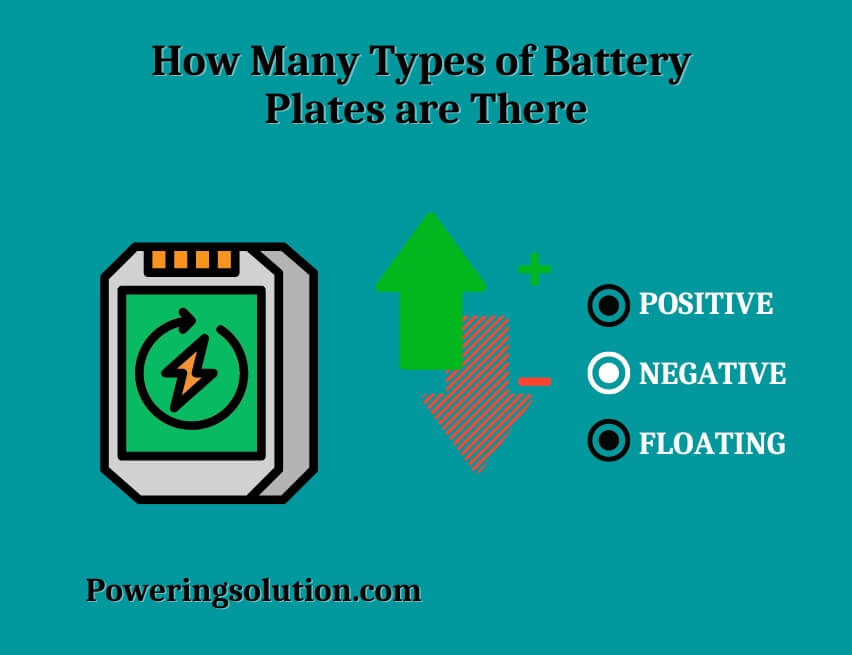Batteries, those quiet powerhouses that keep our lives humming along, are surprisingly complex. Have you ever found yourself wondering, “How many types of battery plates are there?” Well, let’s take a deep dive into the electrifying world of energy storage and learn more.

Battery Basics: Understanding Battery Components
Batteries comprise three essential components – the anode, cathode, and electrolyte. But what’s often overlooked are the battery plates nestled within these components. Let’s explore more.
What are Battery Plates?
Simply put, battery plates are where all the magic happens. They house the chemical reactions that provide the zap for your zap!
Why are Battery Plates Important?
Battery plates are pivotal in deciding the efficiency, lifespan, and performance of a battery. The type of battery plate significantly affects the battery’s overall functionality.
How Many Types of Battery Plates are There?
There are primarily two types of battery plates, each having different sub-types. These include:
- Lead-Acid Battery Plates:
- Flooded Lead-Acid Battery Plates
- Absorbent Glass Mat (AGM) Battery Plates
- Gel Cell Battery Plates
- Alkaline Battery Plates:
- Nickel-Cadmium (NiCd) Battery Plates
- Nickel-Metal Hydride (NiMH) Battery Plates
- Alkaline Manganese Dioxide Battery Plates
But how do these types differ from each other? Let’s plunge right in.
Diving into Lead-Acid Battery Plates
Flooded Lead-Acid Battery Plates
These plates use a liquid electrolyte that freely floods the plate. The major advantage? They’re highly affordable. However, they require regular maintenance and can’t tolerate deep discharges.
Absorbent Glass Mat (AGM) Battery Plates
In AGM batteries, the electrolyte is absorbed into a special glass mat. These batteries boast a low internal resistance and can deliver high currents. Their downside? They can be pretty expensive!
Gel Cell Battery Plates
With these plates, the electrolyte is turned into a gel. They offer a high cycle life and require little maintenance, but they don’t deal well with high heat or overcharging.
Exploring Alkaline Battery Plates
Nickel-Cadmium (NiCd) Battery Plates
The NiCd battery plates are robust and perform well in a variety of temperatures. However, they suffer from the dreaded “memory effect,” which can limit their overall lifespan.
Nickel-Metal Hydride (NiMH) Battery Plates
NiMH battery plates are similar to their NiCd counterparts but with a higher energy density. They’re great for powering high-drain devices, but they can discharge rapidly when not in use.
Alkaline Manganese Dioxide Battery Plates
These are your standard single-use alkaline batteries. They offer a longer shelf life and excellent leakage resistance, but once they’re spent, they’re done for.
Frequently Asked Questions
Are all battery plates made of the same material?
No, the materials used to construct battery plates vary based on the type of battery. For instance, lead-acid batteries use lead plates, while alkaline batteries typically use zinc and manganese dioxide.
What is sulfation in battery plates and how does it affect battery life?
Sulfation occurs when lead-acid batteries are not fully charged, causing a build-up of lead sulfate crystals. Over time, this process can reduce the battery’s capacity and shorten its lifespan.
How can I prevent damage to my battery plates?
Regular maintenance, avoiding overcharging or deep discharging, and ensuring proper storage conditions can help prevent damage to battery plates.
How does the size of battery plates affect a battery’s performance?
Generally, larger plates can store more energy, thus providing a higher capacity. However, they also tend to discharge and recharge slower than smaller plates.
Can I mix different types of battery plates in one battery?
No, it’s not recommended to mix different types of battery plates within a single battery, as this can lead to imbalances and damage.
How do temperature conditions affect battery plates?
Extreme temperatures can significantly impact battery performance. Cold temperatures may slow down chemical reactions in battery plates, reducing efficiency. Conversely, high temperatures can speed up these reactions, potentially leading to overheating and damage.
Conclusion
In conclusion, the question of, “How many types of battery plates are there?” may have a simple answer on the surface, but the underpinning details are fascinating. The battery plate type plays a fundamental role in determining a battery’s functionality and overall performance. Whether it’s a lead-acid battery plate or an alkaline battery plate, each has its unique characteristics and advantages. The knowledge about these different types of battery plates helps us to make informed decisions and keep our devices running smoothly.
